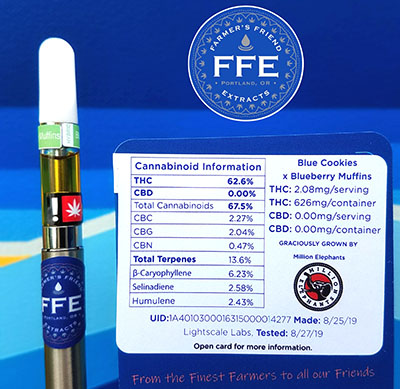Georgia’s Medical Cannabis Expansion Stalls
Marijuana Industry News October 21, 2019 MJ Shareholders
This month, Cannabis Business Times hosted Director of Agronomy Services at Agrios Global Holdings Dr. Curtis Livesay in an educational webinar titled “Moving Beyond the Sativa-Indica Myth.” The hour-long conversation highlighted the importance of moving away from broad categorizations of morphology as it pertains to experiential and therapeutic effects within cultivation and retailer markets in an effort to increase consumer reliability through an emphasis on unique phytochemical profiles: the cannabinoids and terpenes that make up batch-specific varietals.
With the recent release of Leafly’s new Cannabis Guide that moves away from an Indica-Sativa-Hybrid classification and toward a deeper understanding of the individual chemical constituents averaged for a particular genetic lineage, the timing of the webinar could not have been more vital.
Of course, talking about making changes to deep-seated vernacular and instituting those changes in a way that can be used in real-time to create better consumer outcomes are two entirely different endeavors. Here are five ways in which cultivators and retailers can take action now to continue the momentum:
Lab Reports
The importance of good data cannot be underestimated. While labs don’t yet have the ability to test for every single compound present in cannabis products (and fatty matrices like chocolate pose an even greater challenge) testing for as many discoverable compounds as possible in order to have a better understanding of full-spectrum effects will increase trust within the supply chain— from cultivator to consumer.
Growers who seek out reliable lab reports that test for a wide array of chemical constituents can use that data to improve consistency between batches, uncover proprietary profiles and define the unique characteristics of a growing environment for licensed genetics. In turn, retailers can use the data provided to help consumers recognize personal preferential patterns.
States like Nevada have taken up this charge by instituting mandatory terpene testing, recognizing that that some consumers seek out specific terpene profiles in order to achieve particular results. But in the absence of state-wide standardization, the burden of discovery falls on the shoulders of growers and producers, adding yet another upfront cost to production and too often superseding the perceived value of consistent lab data.
Working Together
Retailers can encourage growers to seek out more complete lab data by conveying the importance of this information as it pertains to consumer trust which, ultimately, drives sales. Pledging to source from cultivators willing to participate in full-spectrum testing inspires others to compete for a share of the shelf.
Retailers and producers should also consider carrying some of the financial responsibility of additional testing in states that have yet to institute full-spectrum standards, especially in the interest of small, craft cultivators who may struggle to do so on their own. By sharing in the cost, retailers can define their own standards in line with increasingly nuanced consumer expectations, which are driven in part by access to educational resources like Leafly.
Lastly, while we await federal standards for legalization, the industry as a whole must work together to implement changes in state-to-state testing requirements. If we can move toward a model of mandatory full-spectrum testing, as Nevada has done, not only can we remove the burden of cost but we can start to standardize and collect the data that will fuel scientific research on phytochemical variables and consumer outcomes.
Track the Data
Terpene tracking is more of an art than a science at this point, but patterns can present themselves even on a smaller scale.
Much of our understanding of how aromatic compounds work in the body is based in aromatherapeutic research on isolated compounds. With a full-spectrum profile in hand, however, a cannabis retailer can start to see how these compounds stack up against one another to create experiential averages. Rich limonene content will not always correlate with energizing effects, just as myrcene-rich cultivations will not always indicate a sedative experience.
With that in mind, customer-facing displays and staff interactions can stop relying heavily on broad categorizations, like “Indica” and “Sativa,” that provide little insight into how and why a “strain” is generally perceived as more stimulating or more relaxing and move towards a model that’s more representative of all of the different variables both within the plant and the person.
Communicating to the Consumer
The challenge, then, is how best to communicate these variables to consumers in a clear and concise way that doesn’t leave them dazed and confused. To be sure, the Indica-Sativa model has been a great tool to get folks to understand that not all cannabis is that same—a myth perpetuated by prohibition. But its inaccuracies and inconsistencies, especially in a world of hybridization, leave much room for improvement.

© credit | website.com
Until we know more about how terpenes and cannabinoids work together to create reproducible experiential and therapeutic outcomes in generalized populations, simply listing the phytochemical ingredients of an individual batch of flower should be enough. Even something as simple as a graph or chart depicting lab results can be a tremendous resource. If a consumer can’t find their favorite Blue Dream on the shelf—rich in myrcene and alpha-pinene—they should be able to look at the ingredient profiles of what is currently available and make a decision based on their personal preferences without ever mentioning subjective effects to their budtender.
As labeling requirements become more stringent, especially in light of vaping concerns associated with non-cannabis additives, producers should also be taking this opportunity to introduce more detailed information onto labels. Packaging that lists broad spectrum cannabinoids and primary terpenes can help budtenders and consumers know what to expect from the vast array of products on the market.
Develop In-House Educational Resources
Still, the conversation around the compounds that make up this pharmaceutical powerhouse is just getting started. Few consumers will be savvy enough to fully appreciate how full-spectrum testing can help predict their individual experiences, especially as new states without a legacy of access come online.
This is where staff education comes into play. As the gatekeepers of product, budtenders walk a fine line between retailer and pharmacist. Without giving medical advice, they are expected to make recommendations on complex plants and products to consumers with even more complex body chemistries and subjective experiences.
Arming staff members with at least a basic knowledge of the endocannabinoid system and how phytocannabinoids and other compounds work within that system is imperative to building consumer trust. Framing the vernacular used within a dispensary setting to reflect what we do and don’t know, as in herbalism, creates transparency. In tandem with a more complete and accurate representation of the plant, industry leaders can take action now to help create better consumer outcomes.
MJ Shareholders
MJShareholders.com is the largest dedicated financial network and leading corporate communications firm serving the legal cannabis industry. Our network aims to connect public marijuana companies with these focused cannabis audiences across the US and Canada that are critical for growth: Short and long term cannabis investors Active funding sources Mainstream media Business leaders Cannabis consumers








